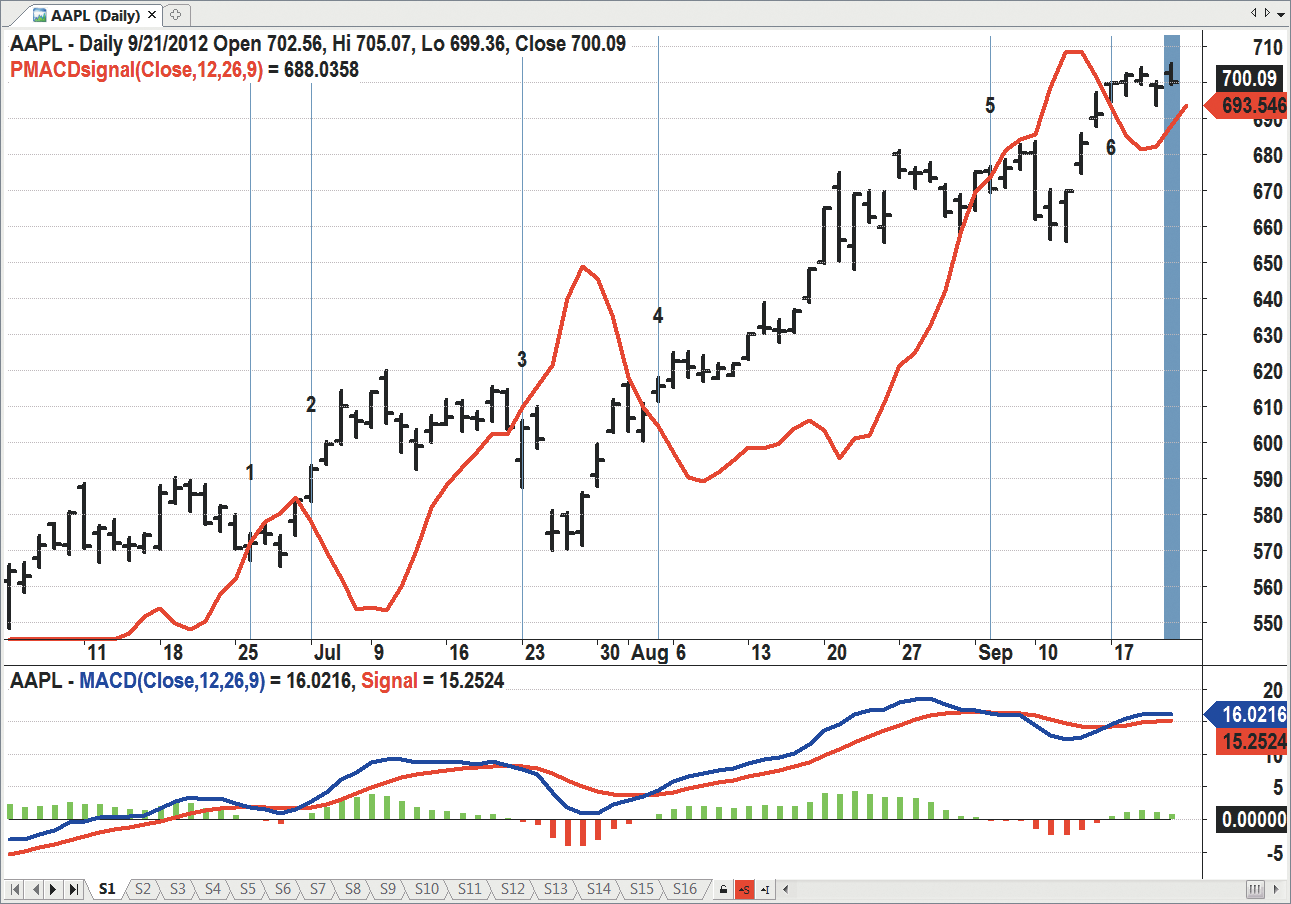INDICATORS
Indicator Crossing Ahead!
Here’s a look at a function that calculates what the price of the next bar would need to be for the MACD line and signal line to cross.
It’s not uncommon to stare at an indicator on a chart and wonder what it will take for a price signal to be generated by that indicator. In my January 2012 STOCKS & COMMODITIES article “Reversing MACD,” I discussed a couple of functions that were based on the relationship of the moving average convergence/divergence (MACD) line. You could plot those functions on a price chart with price projection one bar ahead. One function showed the price required for a change in the direction of MACD. The other showed the price required for the MACD line to cross a certain value level. Specifically, when you are looking at MACD crossing the zero level, you can anticipate the price required for the crossing of the two exponential moving averages used to compute the MACD line.
In this article, I will look at one relationship based on the MACD line and its signal line to price. I will also show three similar price functions for the MACD formula using simple moving averages.
MACD AND SIGNAL
The MACD was created by Gerald Appel. It’s calculated using two exponential moving averages (EMAs) of different lengths and is the value of the shorter (fast)–period EMA less than the value of the longer (slow)–period EMA.
In the fall of 1986, Thomas Aspray developed an indicator he called the MACD-histogram (MACD-His). It’s based on the spread of the MACD and signal lines and is commonly seen plotted as a histogram with the MACD or as an indicator by itself. It is also known as MACDH. Visually, it shows clearly the size of the spread and the crossing of the MACD and signal lines. Aspray used divergences to produce reliable signals before those of the MACD.

FIGURE 1: REVERSE MACD AND SIGNAL TO PRICE. The bottom panel shows the standard MACD indicator. Overlaid on the price chart is the red PMACDsignal() line, annotated with vertical lines where the PMACDsignal() line crosses the closing prices.